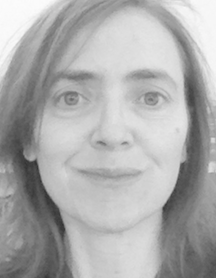*CANCELLED* Noir/horror: The “woman question” and the limits of liberalism in mid-twentieth-century crime fiction and cinema

Writing on ‘Hollywood’s Terror Films’ in 1946, Siegfried Kracauer reflects on a new phenomenon: a wave of American films cultivating ‘the same kind of horror [as anti-Nazi propaganda during the Second World War] sheerly for the sake of entertainment.‘ What makes these films significant, according to Kracauer, is their removal of any sense of the possibility of ‘winning “freedom from fear.”’ The terrors are ‘never incorporated into a meaningful pattern that would neutralize them.’
This presentation focuses on two films that play out this failure of ‘incorporation” associated with the genre (or anti-genre) of film noir: The Spiral Staircase (1946) directed by Robert Siodmak, adapted from Ethel Lina White’s novel Some Must Watch (1933); and Max Ophuls’ The Reckless Moment (1949), based on Elizabeth Sanxay Holding’s short story ‘The Blank Wall’, published in 1947. In Some Must Watch, and in The Spiral Staircase, the horror element is concentrated in the figure of the trap as a marker of the ambiguous differential between predator and prey, criminality and law. In Ophuls’ film, Lucia, a young mother whose ‘first thought’ is always 'how to face her world” and keep trouble at bay, must act in order to limit the fall-out from a “reckless moment.”
At a historical moment when the ends of freedom and emancipation associated with liberalism, alongside ideas of modernity, touch a certain limit or endpoint, noir narratives, insofar as they set up a “grammar” of gender, violence, criminality and law, appear both newer and older than those aligned with liberal modes of thought. An account of these aspects of literary and cinematic noir aims to show how noir contributes to the invention of a increasingly complex and troubled “common sense” of modern subjectivity that remains consequential in the present.
Morgan Thomas teaches art history and cinema studies at the College of Design, Architecture, Art and Planning at the University of Cincinnati, where she also serves on the advisory board of the Center for Film and Media Studies. Her research focuses of the politics and aesthetics of the “poor” image in late modernist and contemporary art and visual culture. Her publications include contributions to Rothko (Tate), The Fall of the Studio: Artists at Work (Valiz), How Aborigines Invented the Idea of Contemporary Art (Power Publications/University of Washington Press), Crossing Cultures: Conflict, Migration, Convergence (University of Melbourne Publishing), Law and the Visual: Representations, Technologies, and Critique (University of Toronto Press) and contributions to the Journal of Curatorial Studies, A+A Online, New Literatures Review, Reading Room, Literature and Aesthetics and caa.reviews. She was co-editor and co-translator of Jean-François Lyotard's The Postmodern Explained (University of Minnesota Press). With Aaron Cowan, she curated the exhibition Liquid Light: Joseph Marioni (2015) at the Dorothy W. and C. Lawson Reed, Jr. Gallery, University of Cincinnati.
Enquiries: Humanities Research Centre | hrc@anu.edu.au | +61 2 6125 4357






